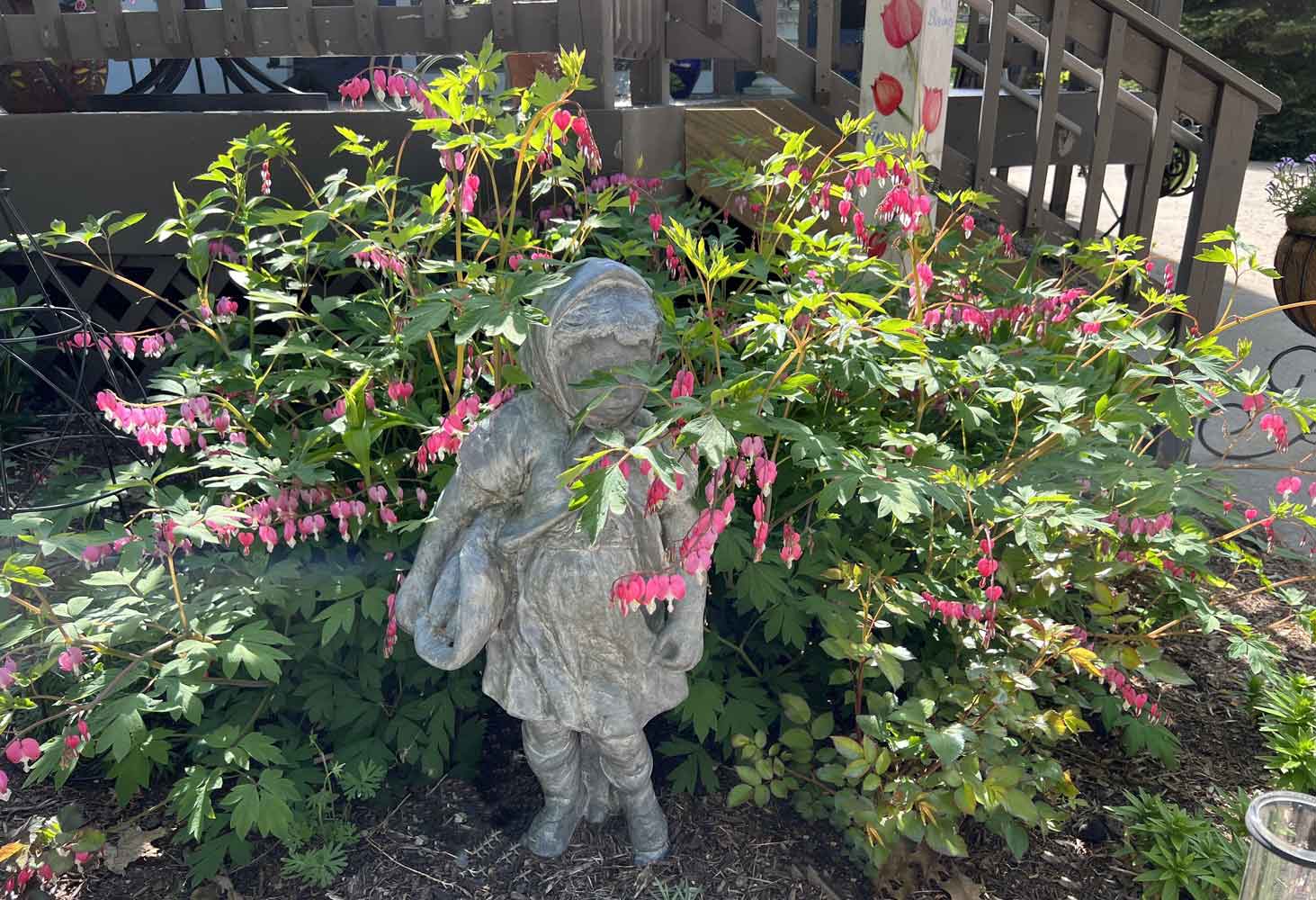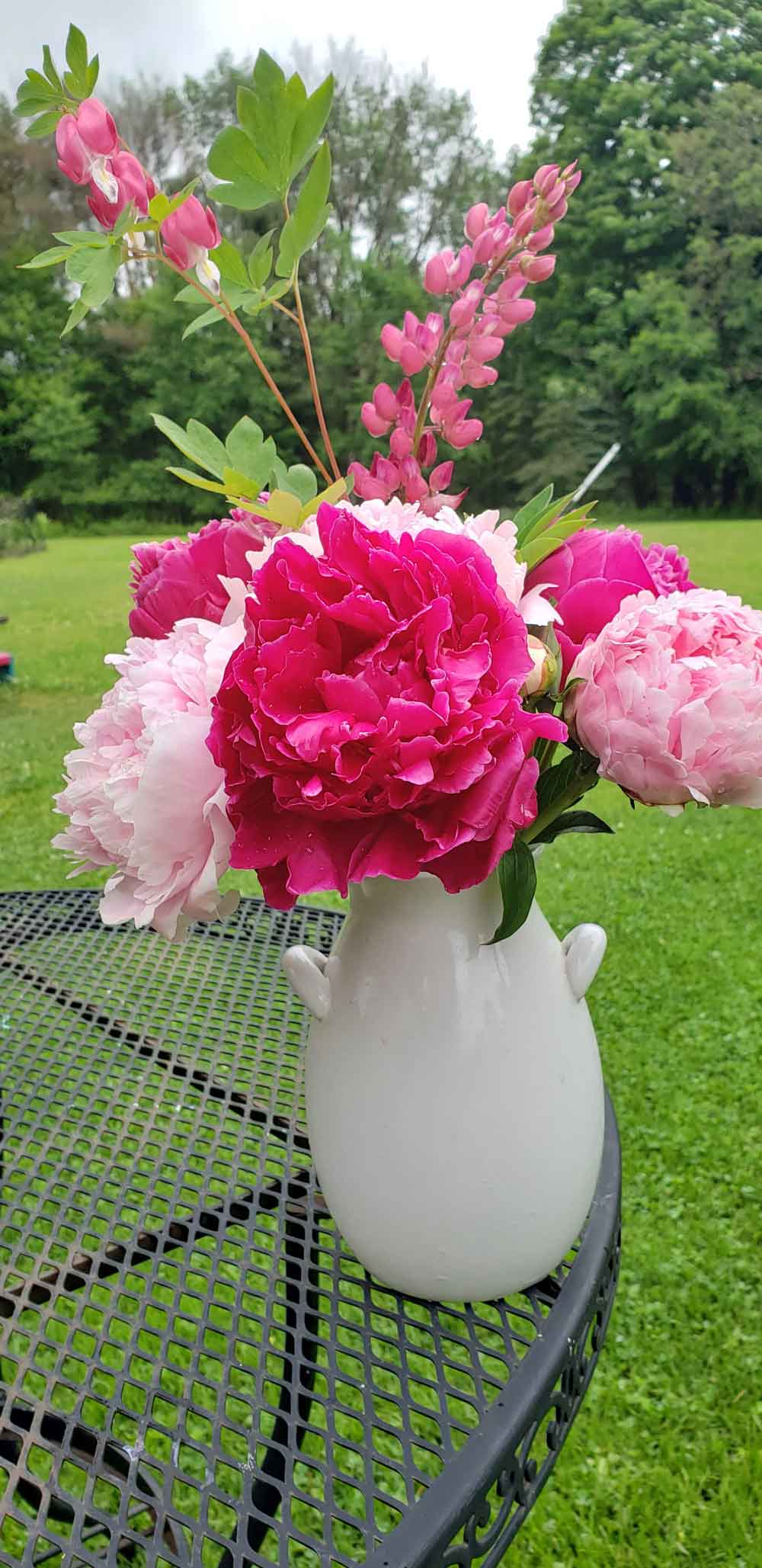About Bleeding Hearts
Bleeding Hearts, Dicentra spectabilis, the hopelessly romantic plant whose shape seems to defy even Mother Nature! Pink, heart-shaped flowers dangle from arching stems can stop even the grumpiest among us and to gaze and marvel at such an unusual creation. This shade-loving plant is highly resistant to deer and attractive to pollinators. A native of Siberia, northern China, Korea, and Japan, Bleeding Hearts create a breathtaking display that has been loved for hundreds of years. Robert Fortune, the Scottish botanist that brought this beauty to the west in the mid-nineteenth century remarked, “It is one of those plants of which the Chinese Mandarins in the north of China are so fond and which they cultivate with so much pride in their little fairy gardens.”
When to Plant Bleeding Heart Roots
Plant Bleeding Heart roots in early spring after all danger of frost has passed. During the first growing season, the plant will develop strong roots and might not flower. The plant will emerge with above ground growth and flowers the following spring.
Where to Plant Bleeding Heart Roots
Bleeding Hearts are shade-loving plants, especially in regions with hot summers. In northern areas where it remains cool and wet, they can tolerate more sun exposure. Choose a location that stays consistently moist, but not overly wet. They thrive in locations where the soil is humus-rich, slightly acidic, and drains well. If ferns, hostas or astilbe are already planted and thriving, consider pairing your Bleeding Hearts with these plantings as they all have similar needs. Prior to planting, work a few inches of compost into the soil for added nutrition and improved drainage.
Bleeding Heart does well in containers or in the landscape as long as the soil is moist but not soggy and protected from the midday sun. Direct sun can cause the plant to protect itself and go dormant early.
Keep in mind that Bleeding Heart blooms are delicate and require protection from strong winds. Look for this type of protection to be found in neighboring ferns, established plants, or a windbreak of some sort.
How to Plant Bleeding Heart Roots
For direct planting into your landscape, choose a spot that receives a moderate amount of shade and where the soil drains well. Dig holes two to three feet apart and mound the dirt inside each hole. Place the root on top of the mound, fanning out the roots to access nutrients from a wider area. Point the roots downwards and the “eyes” should be at the top of the mound, about an inch below soil level. Fill in the hole with a mixture of existing soil and organic material, firmly patting down around the roots. Water thoroughly to help the roots settle into the soil.
For container planting, choose an appropriate container to accommodate the mature size of the plant. Fill the pot with well-draining, humus-rich potting soil, creating a mound reaching a few inches from the top. Fan out the roots and place them atop the mound, with the roots pointing downwards and the “eyes” at the top of the mound about an inch below soil level which should be an inch below the top of the pot. If you would like to plant several roots together, space them approximately 18 inches apart. Fill in the surrounding soil and firmly pat down around the plants. Water thoroughly to help the roots settle into the soil.
How to Care for Bleeding Hearts
Bleeding Heart plants are not prone to pests or diseases. Once established, they’re fairly easy to take care of, preferring moist soil for the healthiest growth. Feel free to cut a few stems when in bloom for arrangements, as doing so will not hurt established plants. If blooms remain on the plant, they will self-seed but do not spread uncontrollably. Bleeding Heart plants typically reach their mature size by the third or fourth year.
Bleeding Heart plants can be propagated from seeds, clump division, or stem cuttings. Sow gathered seeds in the fall. If dividing roots, wait until flowering is complete. Dig a circle around the crown of the roots, and pull up the root ball. The roots grow horizontally and are sturdy enough to survive if you cut through some of them. Upon examining the root crown, locate fresh, pink buds. With a sharp knife, cut sections that contain two or three buds. Replant the original root ball back into its spot, while planting the new sections two to three feet away or in containers.
To propagate by stem cutting, cut off a healthy stem three to five inches long and remove the leaves from the bottom half. Dip the end of the cutting into root hormone and place into a container filled with potting mix. Firmly tamp the soil down and around the stem, then water well to ensure good soil to stem contact. Put a clear plastic bag around the plant and place indoors where it can receive good indirect light, being careful not to scorch the tender plant. If condensation appears inside the bag, poke a hole for ventilation. Make sure the soil remains moist but not soggy. When new growth appears, remove the bag.


